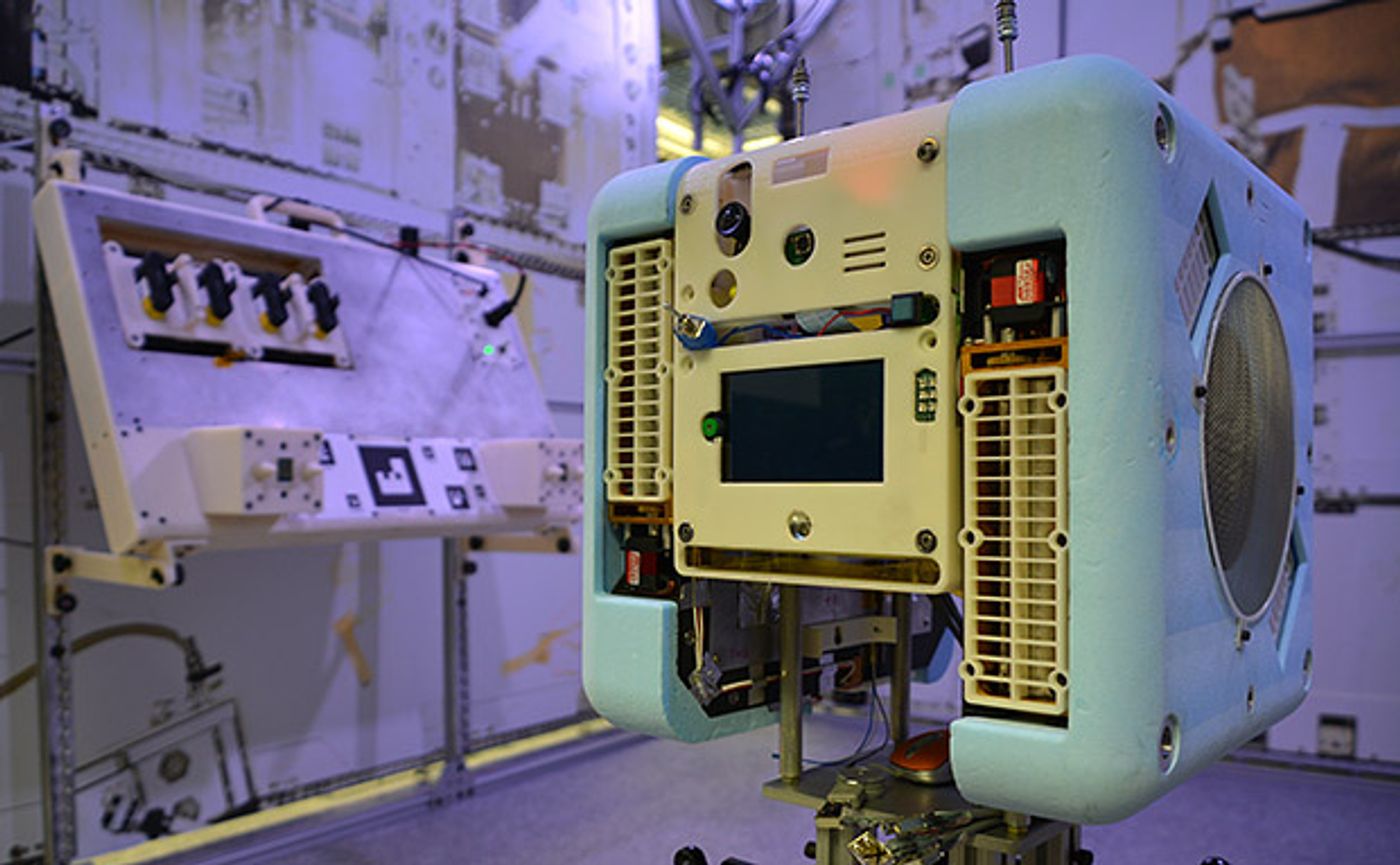Astrobee: The Cube-Shaped Robot that Will Soon Join the ISS Crew
Besides seeing the Earth from high above the surface and experiencing the weightlessness feeling of microgravity, one of the fun things astronauts on the International Space Station (ISS) get to do is test out all kinds of technology and space experiments.
Soon, astronauts on the ISS will be accompanied by a little, boxy friend named Astrobee. It will be a highly-advanced self-navigating robot that’s cube-like in shape and has its own guidance system for traveling around the ISS autonomously.
Image Credit: Evan Ackerman/IEEE Spectrum
Astrobee is equipped with several cameras for navigation and data processing purposes, but it’s also equipped with 12 air jets that can help guide it in the direction it needs to go. The air jets are powered by large CO2 canisters.
So far, Astrobee has gone through different forms of testing on Earth. It has been placed on a stand that rests on a smooth granite surface for as little friction as possible to simulate the frictionless effects of microgravity. Here, its development team could test its air jet technology to ensure it could calibrate them to interact with the camera for self-navigation.
Related: The International Space Station has orbited the Earth more than 100,000 times
The testing chamber for Astrobee also has wallpaper that depicts the true environment of the ISS. The wallpaper is reportedly made from real pictures of the actual ISS walls, so Astrobee is already learning the ISS environment and will soon be ready to join astronauts on the real ISS.
The test will be whether or not Astrobee can guide itself in real microgravity when it finally loses its training wheels (the stand). If successful, it will be able to help astronauts in a variety of ways.
Astrobee is also reportedly equipped with a small robotic arm that will be capable of clinging onto things. This out to be useful for saving energy and CO2, as it will allow the little floating robot to station itself in one place without floating away.
So what will Astrobee be used for? It’s apparently a multi-purpose machine. It can be used to help video-tape the crew while they perform certain experiments or exercises so that NASA can share the footage with the world.
Related: American astronauts conduct 200th spacewalk on the ISS
Astrobee won’t be the first sort of flying robot that ISS astronauts have had a chance to use, but it will be the most advanced. The crew(s) on the ISS are familiar with SPHERES (Synchronized Position Hold, Engage, Reorient, Experimental Satellites) which are similar to Astrobee, but not as robust.
Astrobee is also very versatile in terms of both hardware and software. Because it’s an open system, astronauts will be able to install their own software on it to essentially reprogram Astrobee to do what they want it to do. This includes repurposing sensors and hardware so they can perform new and exciting operations onboard the ISS.
Currently, the robot is in its prototyping phases, but when it’s officially ready, it could be found on a supply ship to the ISS. That could be as soon as this year if everything goes according to plan, but the actual using of the robot isn’t likely to begin until 2018, as our astronauts are currently busy with other experiments.
It ought to be interesting to see what NASA can make of Astrobee and whether or not it will be useful for day-to-day tasks aboard the ISS.









